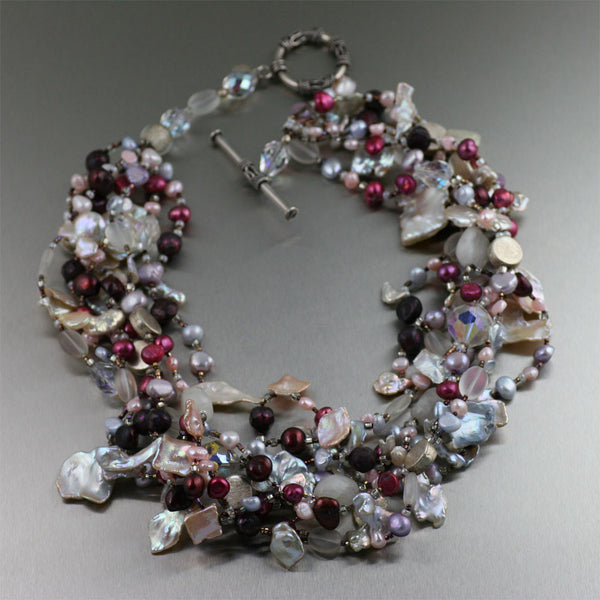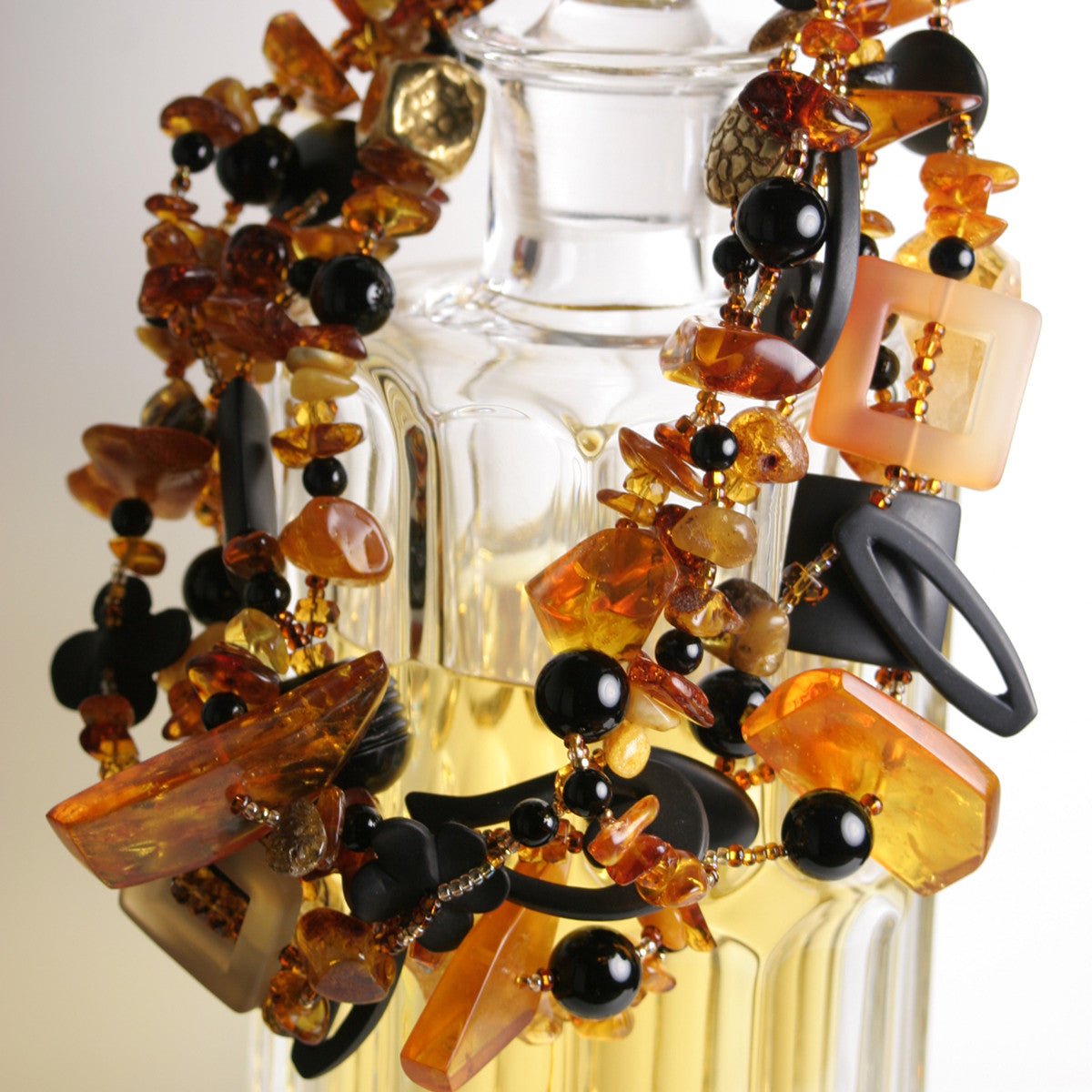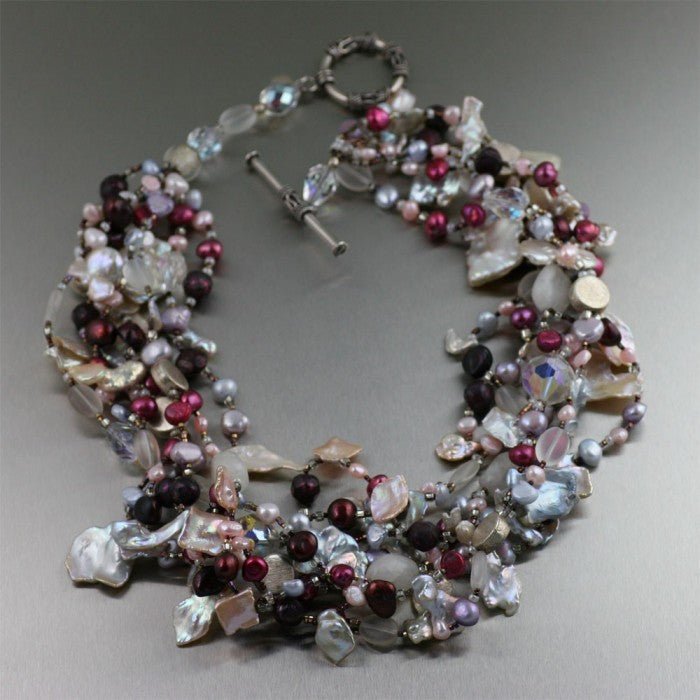Keishi Pearls
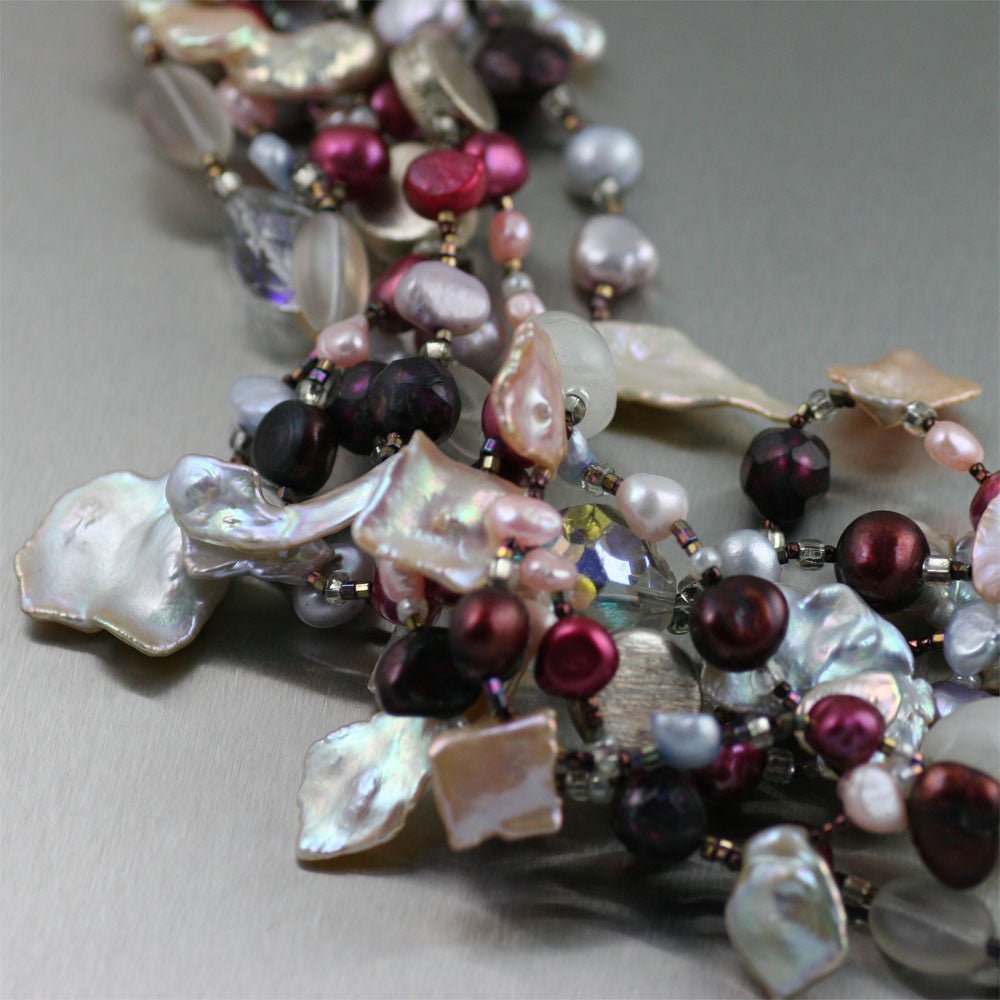
Keishi Pearls - A Brief History
Pearls have been a prized element for jewelry for thousands of years. Although the most expensive pearls earn their price for their regular shape, even lustre and smooth surface many “inferior” pearl shapes are now becoming popular for their unique appearance and striking style that they can add to handmade jewelry. Pearls are produced by mollusks when a small irritant such as a grain of sand gets inside its shell. The mollusk feels this as an irritant and coats the particle with a lustrous substance known as "nacre". Pearls tend to take on the shape of the original particle, which is why perfectly round natural pearls are so rare and valuable.
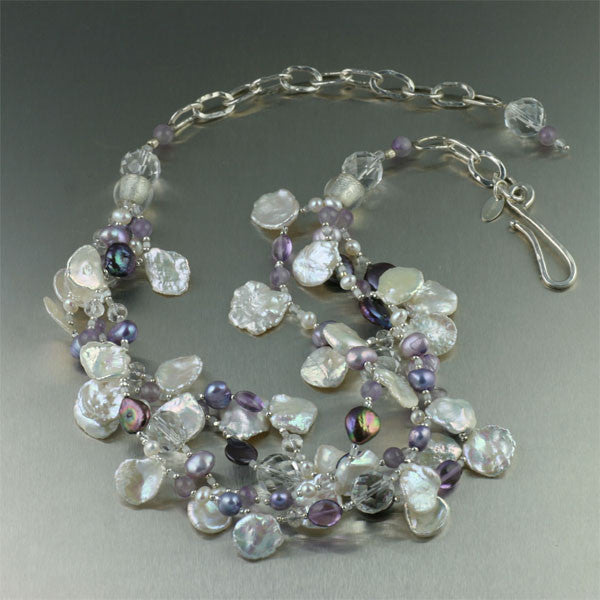
Keishi pearls are formed when the mollusk rejects the irritant before the cultivating process is completed but still produces the nacre in a freeform shape. They can also be formed alongside a cultured pearl in the mollusk. Originally cultivated by Japanese pearl harvesters in the 1920s, keishi pearls were once considered a by-product or a "mistake" since the irritant was expelled before a round pearl could be produced. But there’s no mistaking the reasons why keishi pearls have become so popular in modern jewelry making. Since they are made entirely of nacre, they have a beautiful shimmer and luster and come in a variety of naturally organic shapes, colors and sizes.
"Cornflake" Keishi Pearls
Keishi pearls are also known as "cornflake" pearls because of their irregular shapes and "poppy seed" pearls since the word "keishi" means poppy seed in Japanese. They are generally small in size but are also available in elongated shapes known as stick pearls. Their unique, asymmetrical shapes make them a favorite choice for those searching for pearl jewelry with one-of-a-kind flair and natural beauty. Once considered to be useless and common, keishi pearls are now cultivated mostly in China, Japan and the South Seas and have become a favorite among handmade jewelry designers. John S. Brana offers stunningly beautiful necklaces among his collection made from iridescent cornflake keishi pearls in varied colors, and complemented by sea glass, Swarovski crystals and fine silver.
John Brana
Author
John S Brana, based in San Francisco, is the founder of John S Brana Handmade Jewelry and President of Galleria NuVo, Inc. with over two decades of expertise in crafting distinctive handcrafted pieces. Transitioning from a finance and banking career in 2004, John manages everything from design to marketing. His modern, urban-inspired creations have graced fashion editorials, resonating with stylish, adventurous enthusiasts who value exquisite craftsmanship and luxury. Every piece narrates a distinct tale, mirroring the wearer's individuality.
Also in Gemstone Jewelry Blog
Unveiling the Mystique of Moonstone: History, Geology, and Spiritual Significance
Recent Articles
-
Fine Gemstone Jewelry Throughout the Year
Published date:September 22, 2023
-
June Birthstones: The Allure of Pearls and Moonstones
Published date:June 05, 2023
-
Unveiling the Mystique of Moonstone: History, Geology, and Spiritual Significance
Published date:June 01, 2023
-
The Aquamarine: A Gemstone of Serenity and Courage
Published date:July 22, 2022
-
Your Guide to the Blue Topaz Gemstone
Published date:November 21, 2018
-
Jewelry Must-Have: A Gem-Drenched Necklace
Published date:December 15, 2015
-
Peridot – August’s Birthstone
Published date:August 01, 2014
-
Amber Citrine Crystal Quartz Beaded Gemstone Necklace
Published date:March 10, 2014
-
Amazonite Gemstone Jewelry
Published date:February 18, 2014
-
Blue Chalcedony White Coral Necklace
Published date:February 13, 2014

